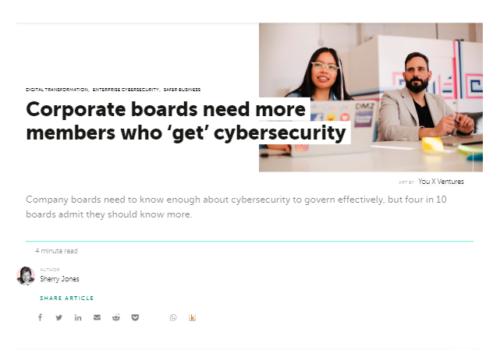Text transcription
The new diversity. Rethinking the pack
Are two heads really better than one? In the workplace, the answer appears to be “yes”—especially if those two heads don’t agree. Perspectives matter. Many organizations have figured this out, and they are embracing worker diversity as the way to bring different viewpoints to the table. In a study of companies earning $500 million a year or more, 85 percent said diversity is crucial for workplace innovation. But in the quest to include people of various genders, ages, races, and ethnicities, are organizations overlooking the obvious and failing to meet their fullest potential? The fact is that any group, no matter how heterogeneous, runs the risk of losing its creative spark over time. Roles and norms become established, as well as pressure to conform, often resulting in “groupthink”—an innovation killer. “Groupthink,” a deliberately Orwellian term popularized in 1972 by research psychologist Irving Janis, is “the mode of thinking that persons engage in when concurrence-seeking becomes so dominant in a cohesive in-group that it tends to override realistic appraisal of alternative courses of action.” In other words, we go along to get along.
Outsider-in decision making
As good as consensus feels, it’s not necessarily best for any organization. What works better, scholars have found, is the conflict, or at least discomfort, that can result from another kind of diversity: the introduction of outsiders into established groups, ideally ones who don’t agree with the “old-timers” leading the pack. In one study, workplace teams who brought in “out-group” newcomers made better decisions than those consisting solely of “in-group” members, by a difference of up to 30 percent. The comfort zone, it turns out, isn’t necessarily the best place for generating great ideas.
Shuffling the deck
Some organizations are catching on to the outsider-in phenomenon, joining forces with those they’ve previously eschewed. The City of San Francisco’s Entrepreneur-in-Residence program invites businesses to propose innovative ways to lower city agencies’ costs, and increase revenue and productivity. One public-private project, in which the city opened 500 of its data sets and then sponsored “hackathons” to find ways of using the data, spurred the creation of more than 100 apps, as well as jobs. Businesses, too, are recognizing the benefits of the outsider-in approach. One Silicon Valley data management company routinely includes thinkers from outside the industry on its product management team; only a few members have business intelligence backgrounds. A technology company brought in medical and fitness experts, scientists, and fashion retail experts to help develop its forthcoming mobile device. One fast-growing wireless audio start-up thrives on conflict, bringing together employees from different departments to discuss problems and solutions: how to drill holes into the speakers’ metal grates; where to place the mute button. They’re said to argue about everything, even after more than a decade in business. This company reportedly expects to break $1 billion in sales in early 2015.
Shake it up
Familiarity breeds content, which is the antithesis of innovation. Arguing and dissension may feel uncomfortable, even dangerous, like standing on the edge of a cliff. But remember how it felt to launch that start-up—the great ideas, the sense ofpossibility, the exhilaration of trying something completely new? What if you could experience that excitement again—and solve some old problems—by bringing in someone completely different? Is it time to shake things up in your organization?
Project Details
Although I’m primarily a technology and cybersecurity writer, my thought leadership ghostwriting also discusses issues of importance in the corporate workplace. This article that I wrote for Dr. J.R. Reagan when he was Global Chief Information Security Officer at Deloitte explores the value to innovation of recruiting people with disparate roles and points of view to workplace teams, and provides examples of how this approach works in the world. Client: Dr. J.R. Reagan/Deloitte Format: Article







